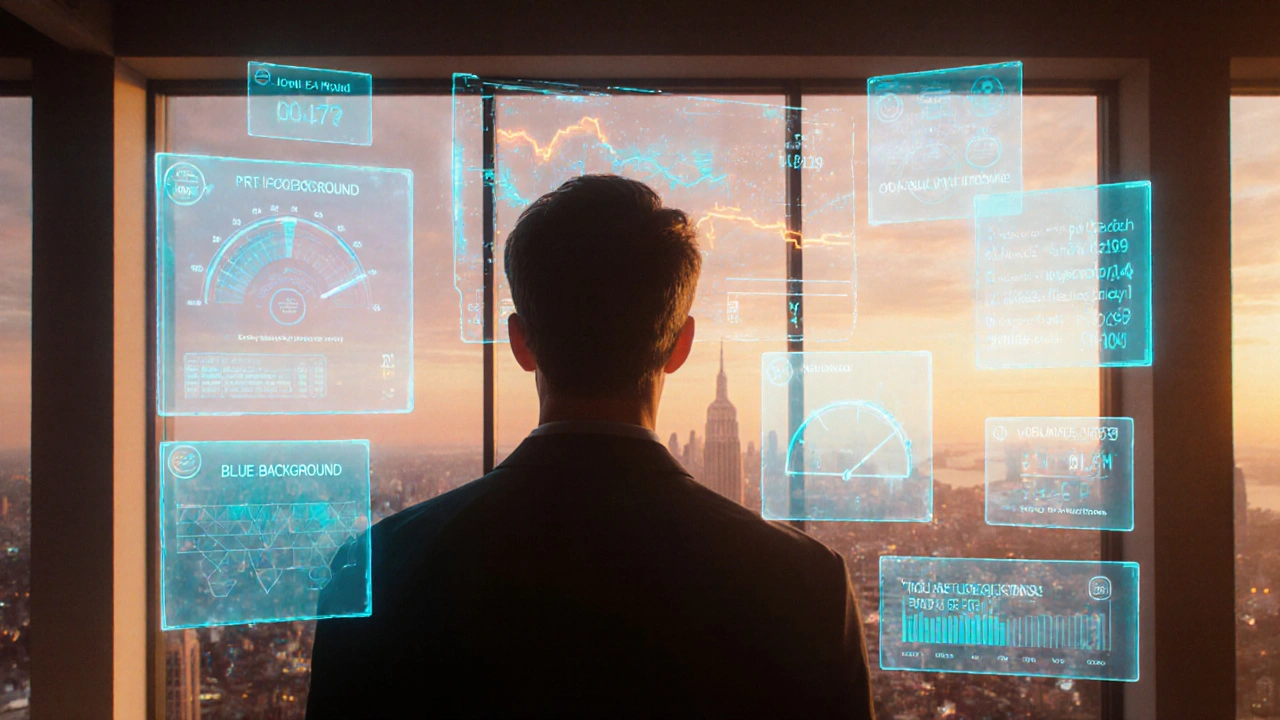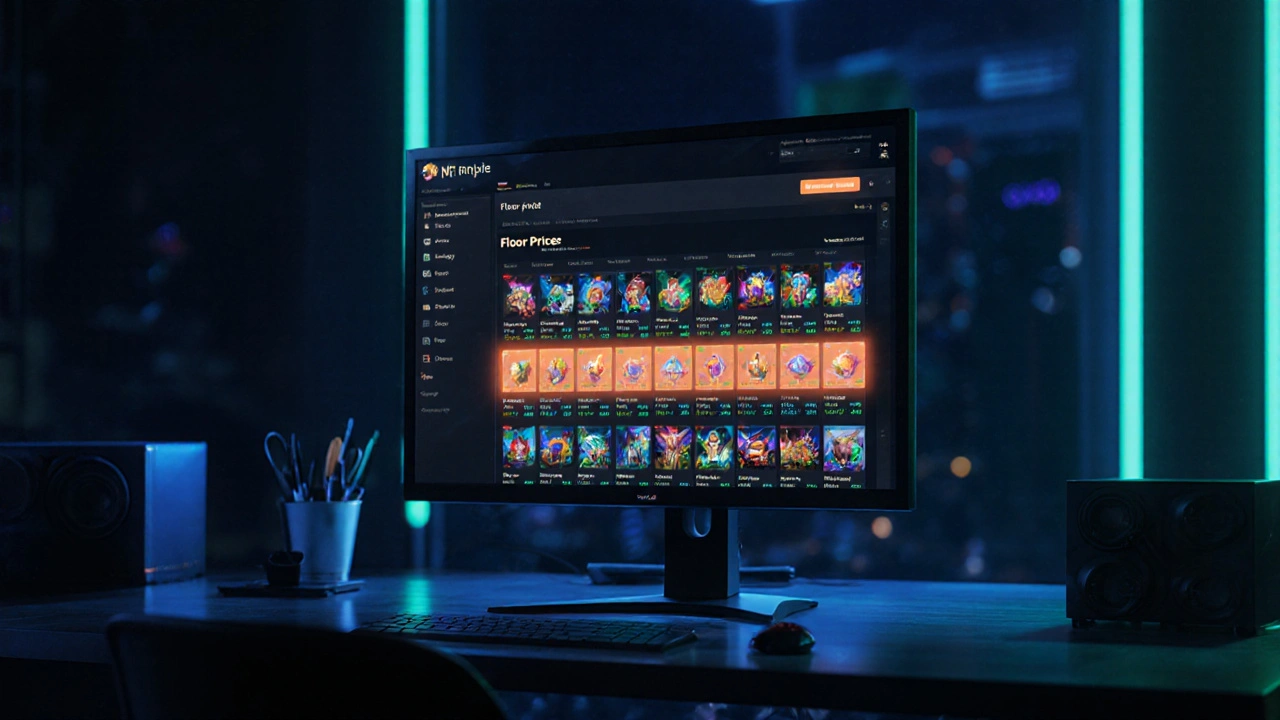Everyone talking about NFTs seems to drop the term NFT floor price like it’s common knowledge, but most newcomers are left scratching their heads. This article breaks down what the floor price actually is, how it’s calculated, and why it matters whether you’re buying, selling, or just watching the market.
Understanding the NFT Floor Price
NFT floor price is the lowest listed price for any token within a specific NFT collection on a marketplace at a given moment. It acts as a quick barometer of the collection’s baseline value.
Think of a collection as a digital album. Each NFT a unique, blockchain‑backed token that represents ownership of a digital asset has its own price tag, but the floor price tells you the cheapest entry point.
How the Floor Price Is Calculated
Marketplaces such as OpenSea, LooksRare, or X2Y2 scan every active listing in a collection. The algorithm is simple: identify the smallest listing price and display it as the floor. Because listings can appear and disappear within minutes, the floor price is a live metric, not a static figure.
Key steps:
- Fetch all active listings for the target collection a set of NFTs minted under the same contract address.
- Filter out listings below a reasonable threshold (e.g., less than 0.01ETH) to avoid spam.
- Select the minimum price and update the public floor price cache.
Why the Floor Price Matters
For buyers, the floor price is the cheapest way to get a foothold in a community. It can signal whether a collection is still approachable or has become prohibitively expensive.
For sellers, the floor price sets a baseline they need to beat if they want a quick sale. Listing significantly above the floor may result in the token sitting unsold for weeks.
Analysts use the floor price to gauge market sentiment. A rising floor often points to growing demand or hype, while a sudden drop can warn of a sell‑off.
Factors That Move the Floor Price
Multiple forces tug at the floor price, and understanding them helps you read the market better.
- Rarity distribution: Collections with a few ultra‑rare items tend to have a higher floor because collectors want at least one token.
- Community activity: Discord chatter, Twitter trends, and influencer shout‑outs can push casual buyers to sniff around the floor.
- Liquidity: A collection with many listings and active traders tends to have a more stable floor.
- Gas fees: When network fees spike, sellers may raise prices to cover costs, nudging the floor upward.
- External events: Partnerships, game launches, or exhibition announcements can cause a floor surge overnight.
Common Misconceptions
Many treat the floor price as a guarantee of value. In reality, it’s just the cheapest listed price at the moment, not a floor for actual sales. A token listed at the floor might never sell if buyers prefer more popular traits.
Another myth is that a higher floor always means a better investment. Sometimes hype inflates the floor temporarily, and a correction can wipe out that premium quickly.
Using Floor Price Data Effectively
Here’s a quick checklist for anyone who wants to leverage the floor price responsibly:
- Monitor the floor across multiple marketplaces; prices can differ due to fee structures.
- Combine floor data with average sale price and volume to assess real demand.
- Set alerts for floor drops of more than 10% within 24hours; that’s often a buying opportunity.
- Cross‑check rarity scores. A low‑floor token with a rare trait might be undervalued.
- Factor in gas fees and marketplace commissions before calculating potential profit.
Floor Price vs. Other Pricing Metrics
| Metric | Value (ETH) | What it tells you |
|---|---|---|
| Floor Price | 0.45 | Cheapest token currently listed |
| Average Sale Price | 1.12 | Mean price of all completed sales in the last 30days |
| Median Sale Price | 0.98 | Middle point of recent sales, less skewed by outliers |
| Volume (30d) | 420 | Total ETH moved, indicating market activity |
The floor price sits at the low end of the spectrum. If the floor is far below the average and median, it may signal a temporary dip or an influx of sellers. Conversely, a floor close to the average hints at tight pricing and possibly limited supply.

Real‑World Example: How the Floor Price Shifted in 2024
In March2024, the "CryptoCritters" collection saw its floor rise from 0.3ETH to 0.7ETH within two weeks after a popular streamer showcased a rare critter in a livestream. The surge was accompanied by a 150% jump in daily volume and a 40% increase in average sale price. However, when the streamer moved on to another game, the floor slipped back to 0.45ETH, underscoring how fragile floor movements can be.
Tips for New Collectors
1. Start by watching the floor for a week; note how often it changes. 2. Use tools like Dune Analytics to overlay floor data with transaction counts. 3. Never buy solely because a token sits at the floor; verify the artwork, artist reputation, and community health. 4. Consider buying multiple low‑floor tokens to diversify risk, especially in large collections where rarity is spread thin.
Future Outlook
As layer‑2 solutions lower gas fees and cross‑chain marketplaces gain traction, floor price data will become even more granular. Expect to see floor metrics not just per collection but per sub‑category (e.g., "Blue‑background Pixel Punks"), giving traders finer entry points.
Frequently Asked Questions
What does a rising floor price indicate?
A rising floor usually means demand is outpacing supply. It can be driven by hype, new utility launches, or a growing community. However, if the rise is sharp and unsupported by sales volume, it may be speculative.
Can I sell an NFT above the floor and still get a quick sale?
It depends on rarity and buyer urgency. Listing far above the floor can work for highly sought traits, but most casual buyers target the floor. A safe strategy is to list slightly above the floor and adjust based on market response.
How often should I check the floor price?
For active traders, a few checks per day are common, especially during market spikes. For long‑term collectors, a weekly glance is enough unless a major announcement hits the collection.
Do different marketplaces show different floor prices?
Yes. Each marketplace has its own fee structure and user base, which can lead to slight variations. Cross‑checking OpenSea, Rarible, and secondary platforms gives a more accurate picture.
Is the floor price affected by gas fees?
Indirectly. When gas fees rise, sellers may increase listings to cover costs, nudging the floor upward. Conversely, low gas periods often see more aggressive pricing.
Should I base my buying decision solely on the floor price?
No. Combine floor data with rarity analysis, community health, and recent sales volume. A low floor on a dead community is usually a trap.

